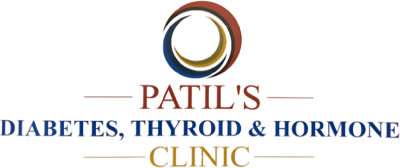Dr. Patil's Diabetes, Thyroid & Hormone Clinic | Dr. Himanshu Patil
Puberty and growth disorders

How Does the Normal Pituitary Work?
Puberty is the developmental stage in which a child’s body undergoes physical and hormonal changes to become capable of reproduction. It marks the transition from childhood to adulthood, typically occurring between the ages of 8 and 14 for girls and 9 and 15 for boys, though the timing can vary. Puberty involves the maturation of the reproductive system, the development of secondary sexual characteristics, and growth spurts.
Growth disorders refer to conditions that affect normal physical development and growth in children and adolescents. These disorders can result in undergrowth or excessive growth and may be caused by genetic, hormonal, nutritional, or environmental factors.
Types of Growth Disorders
Short Stature:
- Constitutional Growth Delay: Some children are naturally shorter due to a delayed growth spurt but eventually catch up to their peers.
- Growth Hormone Deficiency: A condition where the pituitary gland doesn’t produce enough growth hormone, resulting in slow growth and short stature.
- Turner Syndrome: A genetic condition affecting girls where one of the X chromosomes is missing or incomplete, leading to short stature and other physical features.
- Idiopathic Short Stature: A condition where no clear cause of short stature is found, but the child is significantly shorter than their peers.
Excessive Growth:
- Gigantism: Caused by an overproduction of growth hormone before the growth plates close, leading to excessive growth in height.
- Acromegaly: A condition in adults caused by an excess of growth hormone, resulting in abnormal growth of bones and tissues, especially in the hands, feet, and face.
- Marfan Syndrome: A genetic disorder that affects connective tissue, causing individuals to be unusually tall with long limbs, and sometimes leading to heart problems.
Precocious Puberty:
- Early Puberty: When children experience signs of puberty (like breast development or testicular enlargement) before the typical age (before age 8 in girls and age 9 in boys). This can be caused by hormonal imbalances or, in some cases, brain or endocrine system issues.
Delayed Puberty:
- Delayed Onset: When puberty doesn’t begin within the expected age range. This can be caused by hormonal issues, nutritional deficiencies, chronic illnesses, or genetic factors.
- Kallmann Syndrome: A genetic disorder that affects the production of certain hormones that trigger puberty, leading to delayed puberty and a lack of the sense of smell.
Treatment for Growth Disorders
Hormonal Treatment:
- Growth Hormone Therapy: For children with growth hormone deficiency, synthetic growth hormone can help improve growth.
- Puberty Induction: Hormones like estrogen or testosterone may be used to induce puberty in cases of delayed onset.
Nutritional Support:
- Adequate nutrition is crucial for normal growth. Malnutrition can lead to stunted growth, so ensuring a balanced diet with the necessary vitamins and minerals is essential.
Genetic Counseling:
- In the case of genetic conditions like Turner Syndrome or Marfan Syndrome, genetic counseling can help manage the condition and guide families through treatment options.
Surgical Intervention:
- In some cases, surgery might be required, such as for conditions like scoliosis or to address the physical effects of gigantism.
Monitoring and Support:
- Regular monitoring by a pediatric endocrinologist is essential for tracking growth progress and determining if further interventions are needed.
